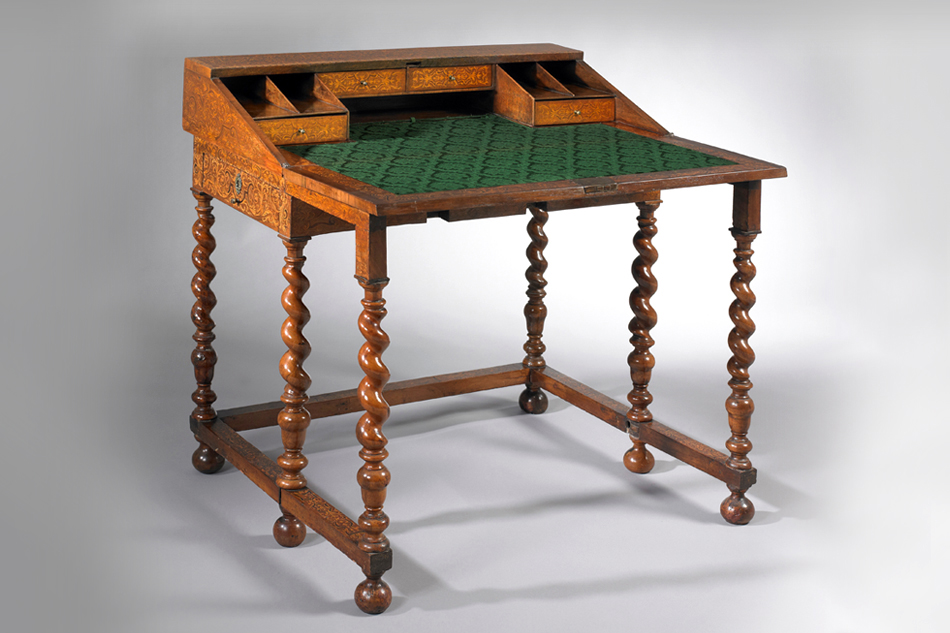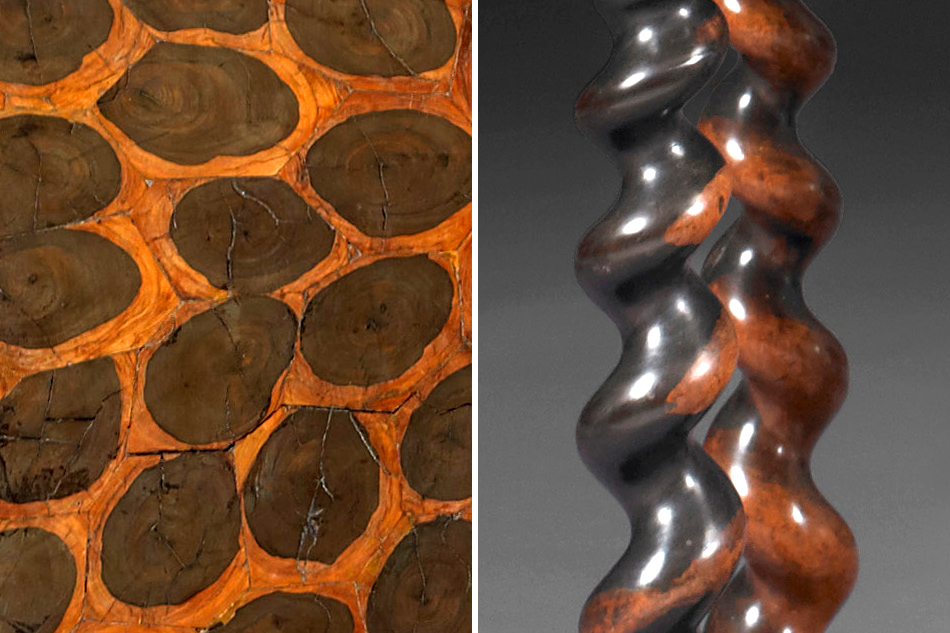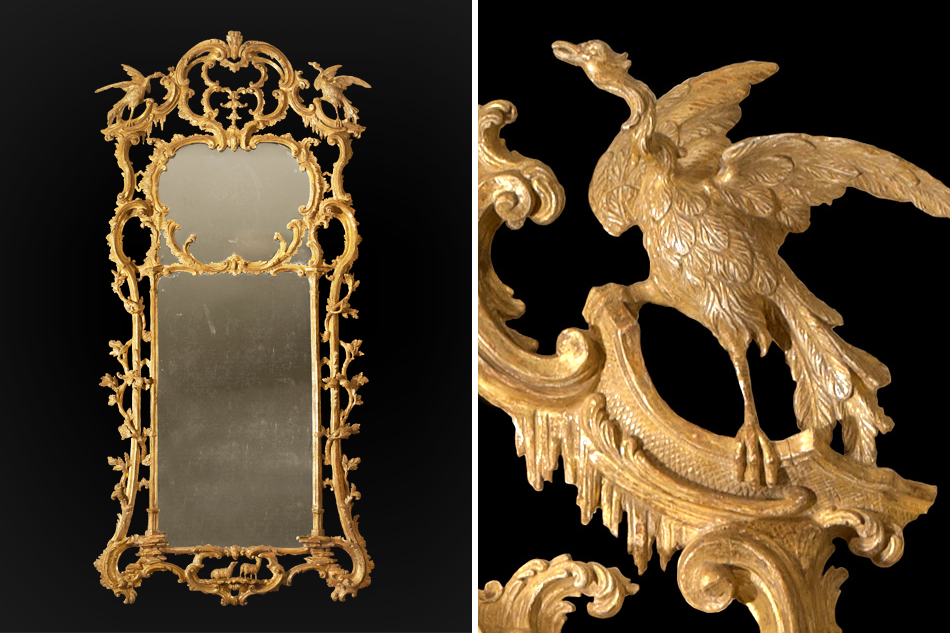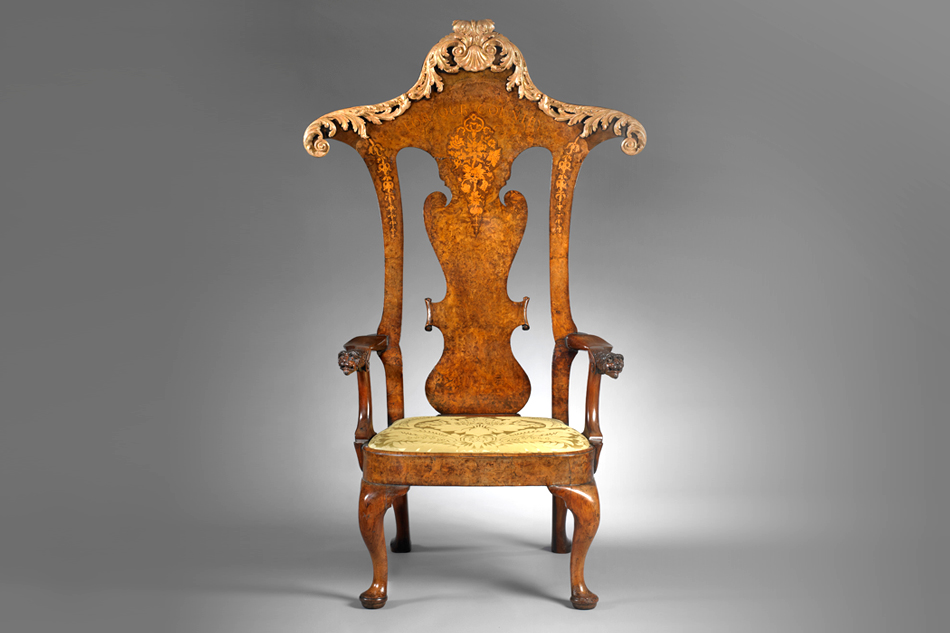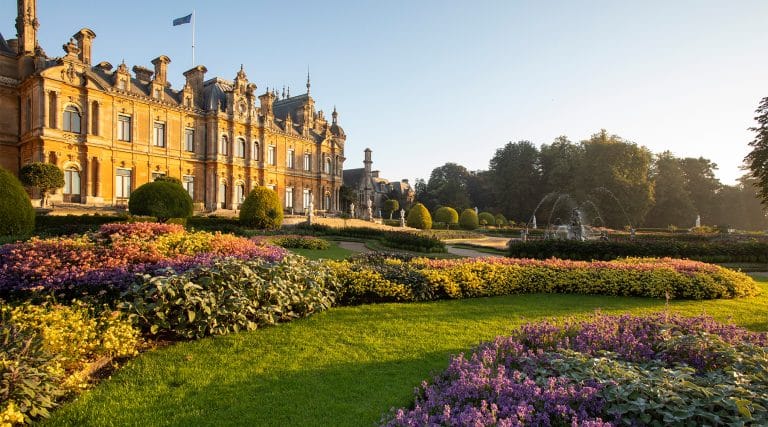
May 15, 2013This small cabinet from the turn of the 18th century sits on a barley-twist stand. Its unique oyster-shell pattern comes from the bias cut of the cocuswood — native only to Jamaica and Cuba — artisans used to craft it. Top: This six-foot-tall walnut-marquetry armchair, circa 1750, dates back to a period when France and England were at war. Photos courtesy of Mallett
Mallett, the world-famous London and New York antiques dealer, is staging “Great English Furniture: Rare Pieces from Important American Collections,” at its flagship London townhouse from May 20 to June 1. The selling exhibition spotlights 40 exquisitely crafted designs — chairs, cabinets, mirrors and a desk — all made between the late 17th and late 18th centuries. These treasures have been collected over many decades by two unrelated families, both of whom recently decided to part with them. Most of the pieces have not been seen for a quarter of a century or more.
The collectors had different passions: The first family focused on the early 18th century, with a special interest in varieties of wood. A particularly striking example is a dainty cabinet, circa 1700, on a barley-twist stand and made of cocuswood, which is endemic to the Jamaican coast and a small area of Cuba. Cut on the bias, the wood reveals a pattern of black oyster shells against a background that has mellowed from its original white to a warm gold.
The second family, in contrast, sought opulent furniture from the late 18th century, like the gilded and carved Chippendale-period mirror on offer, replete with scrolls, flowers and a pair of exotic, crested hoopoe birds. Curiously, the most flamboyant piece in the exhibition comes not from this family, but from the other. It is a six-foot-tall, walnut-marquetry armchair from around 1750, of which only one other such example is known. Made when England and France were at war, it is inlaid with the motto “For Our Country.” Of it, Mallett’s chief executive, Giles Hutchinson Smith, says: “I walked into the house, saw this chair and was completely blown away by the colors, the ambitiousness of the shape, the delicacy of the marquetry. It looks like it was made for a giant but is very sit-able.”
“The collectors had different passions: The first family focused on the early 18th century, with a special interest in varieties of wood. The second family, in contrast, sought opulent furniture from the late 18th century.”

